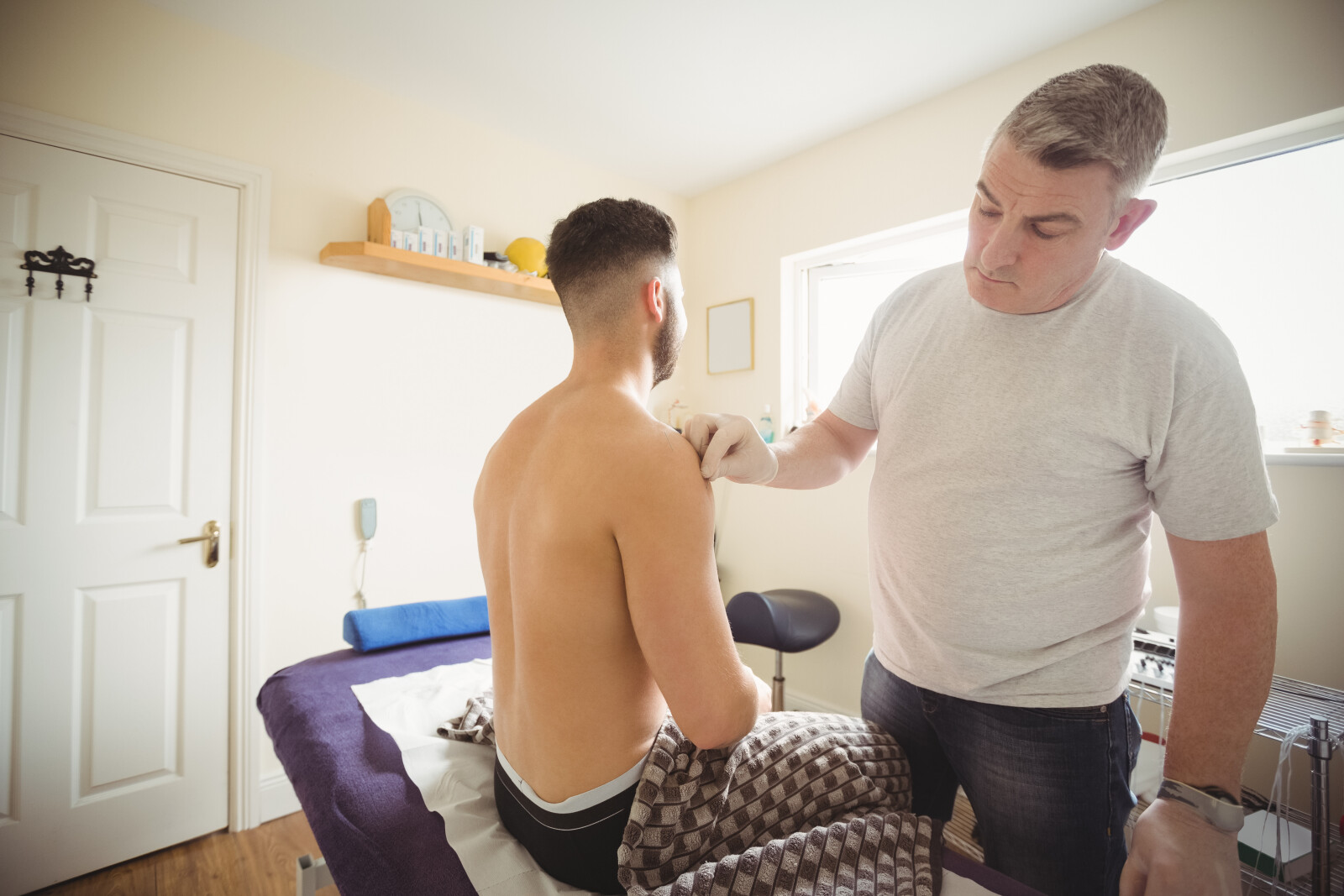4 Common Slip and Fall Back Injuries With Average Settlement Amounts
Back injuries resulting from slip and fall accidents often lead to substantial medical expenses and potential lawsuit settlements. This article explores the four most common back injuries - sprains, strains, herniated discs, broken bones, and spinal cord injuries - their associated treatment costs, and average settlement amounts.

Additionally, the legal recourse for victims seeking compensation due to negligence is examined, providing comprehensive insight into the economic impact of these injuries.
Key Takeaways
- Slip and fall accidents can result in various back injuries, including herniated or slipped discs, broken back bones, and spinal cord injuries.
- Herniated or slipped discs can lead to substantial nerve damage and require expensive medical treatments ranging from $50,000 to $100,000.
- Broken back bones may necessitate surgical fusion procedures costing up to $150,000, while non-surgical treatments typically cost below $15,000.
- Spinal cord injuries can cause paralysis and incur lifetime costs of $1.7 million to over $5 million. Legal recourse is available, and lawsuits against negligent parties can result in significant compensation amounts.
Understanding the Anatomy and Common Back Injuries From Slips and Falls
Understanding the anatomy of the back is crucial in comprehending the severity and potential impacts of common slip and fall back injuries. These injuries can range from sprains and strains to spinal cord injuries, each carrying a different average settlement amount.
The back is divided into five sections: cervical, thoracic, lumbar, sacrum, and coccyx. It is a complex structure supported by muscles and tendons, with vertebrae safeguarding the spinal cord.
Preventing slip and fall accidents could significantly reduce the occurrence of injuries such as slipped discs or spinal fractures. In case of injury, the importance of immediate medical attention cannot be overstated, as early intervention can prevent further complications.
In severe cases, victims may need to seek legal recourse for adequate compensation, considering the high costs associated with treatments.
The Impact and Settlement Amounts of Herniated or Slipped Discs
The impact of herniated or slipped discs, often resulting from violent impacts, can lead to substantial nerve damage and necessitate complex, high-risk surgery, with compensation costs ranging from $50,000 to $100,000.
Understanding the treatment options for herniated discs: Non-surgical treatments include medications, physical therapy, and injections. However, severe cases may require surgery such as a discectomy or spinal fusion.
Long-term effects of herniated discs on the body: Chronic back pain, nerve damage, decreased mobility, and potential recurrence of herniation are some of the long-term effects.
Costs and compensation: The financial burden can be substantial, from medical costs to loss of earnings due to incapacitation.
Dealing With Broken Back Bones: Costs and Compensation
Severe impacts such as those from a hard fall can result in spinal fractures or a broken back, with treatment costs potentially reaching up to $150,000 for surgical fusion procedures. The costs of non-surgical treatment for broken back bones, however, are significantly lower, usually not exceeding $15,000.
These costs, while lower, can still pose a substantial financial burden. When these injuries are the result of a slip and fall, victims may be entitled to compensation. Lawsuits involving broken vertebrae, particularly in cases where negligence is proven, can result in significant compensation amounts for the injured party.
This compensation can be crucial in offsetting the financial burden imposed by treatment costs, and in providing a means of support during recovery.
Spinal Cord Injuries: Severity, Cost, and Legal Recourse
Acute spinal cord injuries, resulting from incidents such as slip and falls, can lead to paralysis and necessitate extensive medical intervention, which often includes costly surgeries and long-term rehabilitation. These injuries often display a high level of severity, making the recovery process long and arduous.
The lifetime costs of permanent spinal cord injury can range from $1.7 million to over $5 million, showcasing the financial burden on the victim.
The devastating nature of spinal cord injuries, coupled with high medical costs, can lead to significant emotional distress.
Legal recourse is available for victims of slip and fall spinal cord injuries. Lawsuits filed against negligent parties can result in multimillion-dollar verdicts, providing much-needed financial relief to the afflicted.
These points underscore the severity of slip and fall spinal cord injuries and the available legal options.
Frequently Asked Questions
What Are Some Preventative Measures to Avoid Slip and Fall Back Injuries?
Preventative measures to avoid slip and fall back injuries include:
- Using appropriate flooring materials and safety equipment.
- Flooring materials should be non-slip, well-maintained, and free of debris.
- Safety equipment such as handrails, guardrails, and personal protective equipment can also help prevent injuries.
Other steps towards reducing the risk of slip and fall back injuries include:
- Regular inspections to identify potential hazards.
- Prompt remediation of hazards once they are identified.
- Promoting a culture of safety within the environment.
How Does Age or Pre-Existing Conditions Affect the Severity and Recovery Time of Slip and Fall Back Injuries?
Age and pre-existing conditions significantly influence the severity and recovery time of slip and fall back injuries.
Advanced age often correlates with prolonged recovery periods and increased susceptibility to severe injuries.
Pre-existing conditions, such as osteoporosis or prior spinal issues, can exacerbate injury severity and complicate treatment.
Age-specific treatment strategies are crucial in these instances to facilitate recovery.
Therefore, understanding the impact of such variables is indispensable for effective injury management and rehabilitation.
What Are the Long-Term Impacts of These Types of Injuries, Beyond Immediate Medical Costs?
Long-term impacts of slip and fall back injuries extend beyond immediate medical costs, often resulting in significant psychological effects and lifestyle changes.
Affected individuals may endure chronic pain, leading to emotional distress and potentially depressive disorders.
Physical limitations may necessitate modifications to living arrangements and curtailment of daily activities.
Moreover, persistent pain and mobility difficulties can cause a shift in employment status or even permanent disability, greatly influencing an individual's socio-economic status.
Are There Any Therapies or Rehabilitation Methods That Aid in the Recovery of Slip and Fall Back Injuries?
Therapies for slip and fall back injuries often involve physical rehabilitation, pain management techniques, and alternative healing methods.
Physical therapy can improve mobility and strength, while pain management may involve medication or procedures to decrease discomfort.
Alternative methods such as acupuncture or chiropractic care may also aid in recovery.
However, the effectiveness of these therapies depends on the severity of the injury and patient's response to treatment.
How Does the Process of Filing a Lawsuit for a Slip and Fall Injury Differ From Other Personal Injury Lawsuits?
In slip and fall injury lawsuits, as in other personal injury cases, the process involves adhering to lawsuit timelines and rigorous collection of evidence.
However, distinguishing factors include the need to prove that the defendant had knowledge of the hazardous condition and failed to address it, which directly led to the injury.
Additionally, medical evidence pertaining specifically to the back injury is crucial in determining the severity of the damage and the corresponding settlement amount.

This post has been generated by AI and was not reviewed by editors. This is Not legal advice. Please consult with an attorney.




